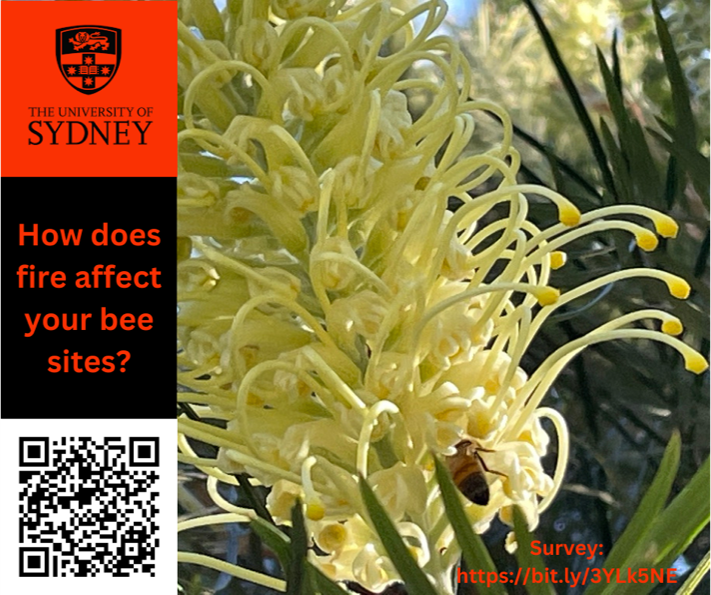Hazard reduction burns (or prescribed/planned burns) aim to reduce the risk of bushfires. The 2019-20 bushfires left beekeepers devastated by the loss of bee hives, dwellings, infrastructure, equipment, site access points, and bee sites, with direct impacts upon their ability to provide pollination services (Clarke 2023).
Fewer bushfires would be of benefit to the beekeeping industry, and thus hazard reduction burns have a net benefit to the industry.
Fewer bushfires would be of benefit to the beekeeping industry, and thus hazard reduction burns have a net benefit to the industry. However, little is known about the potential effects of hazard reduction burns on the industry. Hazard reduction burns have several potential impacts on beekeeping, for example, the timing of the burns may mean that there is no ground flora at a site that would otherwise have it. AgriFutures Australia has commissioned a study, led by researchers at the University of Sydney, to determine the effects of hazard reduction burning on the honey bee and pollination industries.
If you’re a beekeeper who has or had an apiary on or within 3 km of a public land site we would love to hear about your experience with bushfire and hazard reduction burns and any ideas you may have for reducing the impacts.
Complete the survey!
The survey is available at https://bit.ly/3YLk5NE and a participant information statement is available to help you to decide if you will participate.
Acknowledgements:
- Impacts of prescribed burning on the honey bee and pollination industries. AgriFutures Australia. Michael Holmes, Nadine Chapman, Thomas White, Tina Bell, Tanya Latty
- Clarke (2023) Impact on honey bee biosecurity of reduced access to public lands. AgriFutures Australia, Wagga Wagga
- This article was peer reviewed by Michael Holmes and Tanya Latty.


